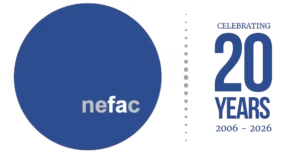By Matthew Kauffman
 From the millions of tax dollars spent on Medicaid bills to the racial breakdown of public-school discipline to the condition of each of 4,218 highway bridges, the state of Connecticut — like all states — collects massive piles of data that often sit just beyond the reach of researchers, journalists and average citizens.
From the millions of tax dollars spent on Medicaid bills to the racial breakdown of public-school discipline to the condition of each of 4,218 highway bridges, the state of Connecticut — like all states — collects massive piles of data that often sit just beyond the reach of researchers, journalists and average citizens.
But Connecticut Gov. Dannel P. Malloy is pledging to change that, with an executive order (.pdf) that could move enormous amounts of data onto a free, user-friendly online portal.
“This data belongs to the people of Connecticut, and this initiative will help make that data more easily and conveniently accessible to them,” Malloy said in a press release, to the glee of transparency advocates not accustomed to such sentiments from a government official.
Malloy’s order calls on every executive branch agency to identify datasets that can be made available on the portal, which will be located at www.data.ct.gov. Agencies are to identify an initial batch of datasets by late May, selecting data that are deemed reliable, frequently requested under the state’s Freedom of Information Act, and that will “improve agency accountability and efficiency, enhance public knowledge of the agency’s operations, or create economic innovation and opportunity.”
At the Courant, large datasets have proven critical in our reporting. Databases of death certificates allowed us to identify hospital deaths that were kept secret from state authorities. Data on police stops revealed ethnic and racial disparities in the way motorists were treated. Cell phone data helped us connect the dots in investigations of government corruption.
Some of the databases we’ve used were easy to acquire. Others required lengthy and frustrating negotiations or appeals to the Freedom of Information Commission. If successfully implemented, Malloy’s executive order should make it easier for journalists to do their jobs.
Connecticut’s action builds on the state’s transparency website, which already provides data in searchable and downloadable form on payroll, pensions, contracts, grants and vendor payments. And it’s part of a larger national trend of governments freeing “big data.” Connecticut’s move follows open-data initiatives in New York and other states across the country. A number of municipalities also have pursued open-data plans, including Providence, R.I.
While almost certainly a step in the right direction, some transparency advocates are adopting a cautious approach to the executive order, given historical resistance by some bureaucracies to the notion of giving up raw data. At a recent forum hosted by the Connecticut Data Collaborative, a public-private partnership working to improve access to data, a handful of state employees expressed concern about increased workloads from the order, and some repeated a frequent refrain that end users might misinterpret or mis-use the data.
Moreover, the governor’s executive order contains a potentially troubling exception, suggesting the order might not apply to data releases that would “hinder the operation of government or impose an undue financial, operational or administrative burden on a state agency.”
Fans of government transparency will be keeping a close watch on how Connecticut agencies choose to interpret that line.
Matthew is a reporter on the investigative desk of The Hartford Courant.
